Why is customer interaction management important? Because every customer interaction can impact your company, no matter how large or small.
Each good interaction is a net positive, and every poor customer experience is a net negative, whether answering a simple question or guiding a customer through complex processes. There’s no neutral ground.
Additionally, customer interaction is a team sport. While support agents and sales reps may be the ones taking center field, everyone from the IT team that keeps your contact center up and running to the supervisors who keep an eye on agents plays a role in the overall experience.
This is why customer experience management is so vital to businesses. Managing your customer interactions helps ensure that you deliver the best experience possible to your customers, meet their needs, and build brand loyalty to retain their business.
Strategies to Monitor and Improve Customer Interactions
Given the importance of customer interaction management, we must first ask: How can we improve the customer journey and customer support across every touchpoint?
Today, brand loyalty is at an all-time low, while customer service expectations are at an all-time high. People are wary of large corporations and marketing and are more than willing to shop around with different brands until they find a high-quality service that meets their needs. Yet, paradoxically, organizations often cut corners on the customer experience, making it even harder to retain customers.

Neglecting the customer experience, even if it’s just once, can impact a consumer’s entire perception of your brand. Bringing a dissatisfied customer back can be even more difficult than finding new customers from the ground up, so companies try to avoid that as much as possible.
To improve the customer experience, we need to be able to monitor and analyze customer interactions. These are some proven strategies for monitoring and improving your customer support:
Implement omnichannel monitoring
Customers use a wide array of channels and touchpoints to receive support, from calling contact centers to messaging brands on social media. It’s essential to monitor each of them.
Omnichannel monitoring aggregates interaction data from all channels — phone, email, chat, social media, and more — to provide a complete view of the customer experience. This allows organizations to monitor interactions and immediately address any issues regardless of the channels.
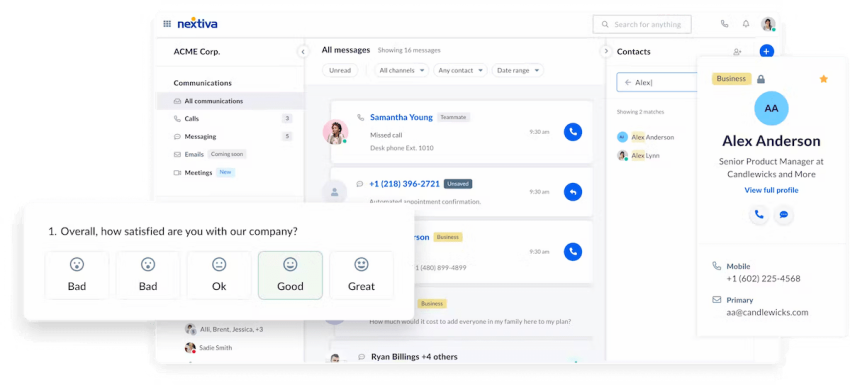
Additionally, AI-powered monitoring tools, such as Nextiva Unified CXM, can assess customer emotions and detect dissatisfaction before it becomes problematic. This allows contact center supervisors to assist customers proactively, keeping satisfaction high.
Leverage customer feedback
No one knows how a customer feels better than the customers themselves. Customer feedback is an important data source that should not be overlooked, whether through post-call surveys, sentiment analysis tools, or social media buzz.
It’s essential to capture immediate feedback to understand customer sentiment and then use that feedback to measure overall satisfaction. This can help you gauge customer loyalty and identify areas for improvement.
Additionally, keep an eye on social media chatter. This is where you’ll find unfiltered customer opinions, whether they’re ranting about a poor experience or raving about your services. Social media engagement is an essential tool for customer support, but it’s also a great source of feedback.
Provide continuous training
No matter how good your customer support may be, there’s always room for improvement. Agents should receive regular training to address any weaknesses and practice and improve their response strategies.
This training should include regular simulations of complex customer interactions so that agents are prepared for even the most frustrated customers and have strategies for complicated inquiries. Customer support agents also need to be able to understand and empathize with customers, so make sure that’s part of their training.

Additionally, agents need to stay current on the latest changes in products and services. Be sure to provide regular updates and training so they can provide informed, accurate support, especially when a new product, feature, or service is rolling out.
Foster a culture of accountability
Customer support is a team effort – every team member must do their part. It’s vital to ensure that all team members remain aligned and informed through shared CRM systems, the contact center platform, and any other communication platforms you use.
Regularly sharing customer insights across departments can help drive improvements by keeping all teams informed and able to contribute to the customer experience. If, for instance, a customer is complaining about technical issues, then sharing that information with the IT team can help them make improvements for future calls.
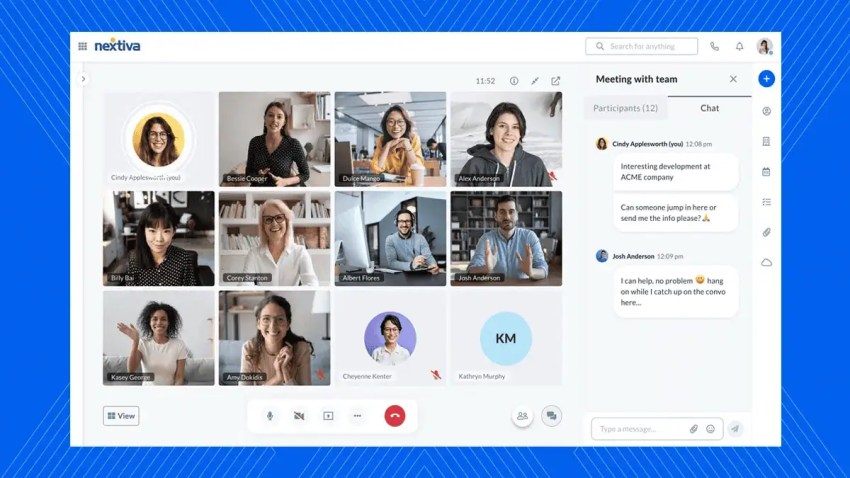
Teams and employees should also be incentivized to provide a great customer experience. Find ways to reward teams for creating positive experiences and exceptional customer interactions. This will improve morale and encourage teams to strive to provide exceptional customer service.
Use customer journey mapping
To improve the customer experience, you need to understand the customer journey. As such, customer journey mapping should identify and understand all touch points customers reach and ensure that each one can create a high-quality experience.
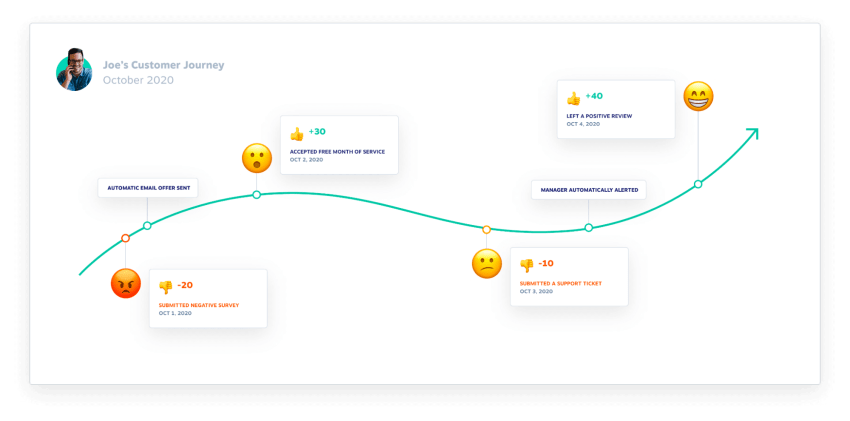
Look for areas where customers are experiencing friction or difficulties and prioritize making improvements there. It’s also recommended to identify key touch points and implement personalized communication strategies. AI-powered tools are particularly useful for improving personalization, as they can generate responses tailored to each customer.
Review and act on interaction data
Every interaction is a source of valuable data. Be sure to regularly review customer interaction data to identify trends or recurring issues. Then, use that data to guide improvements to your support processes and find new areas for agent training.
If, for instance, your current call flows lead to a bottleneck, it’s important to be able to identify and address this issue. Otherwise, you’ll risk losing customers as they constantly hit the same snag.
It’s essential to regularly analyze, enhance, and re-evaluate customer interaction strategies. There’s always room for improvement, and each new iteration can help make your CX even better.
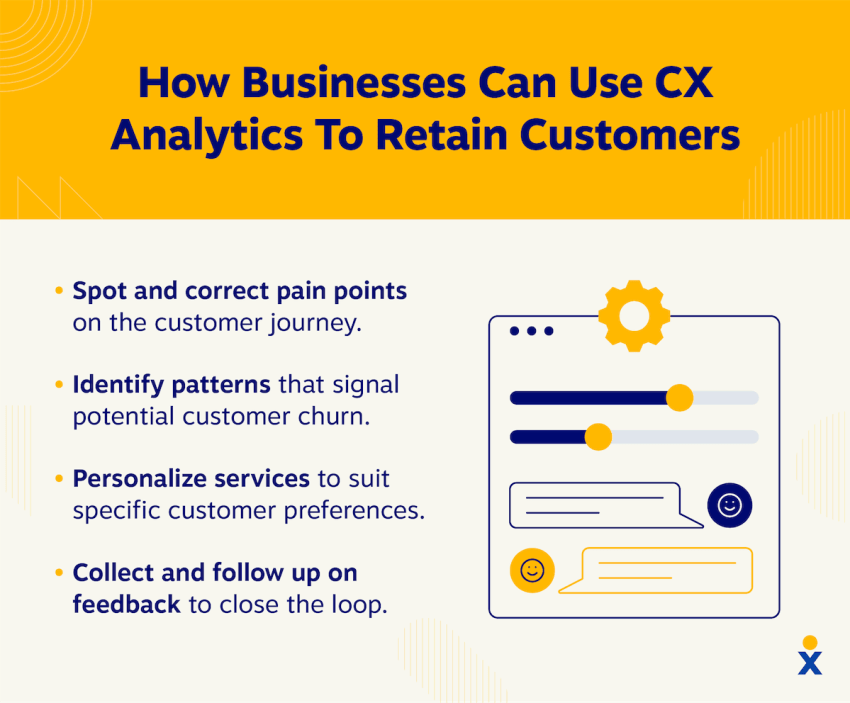
Empower customers with self-service
Sometimes, the best way to help customers is to empower them to help themselves. Self-service is a critical aspect of any contact center or customer service environment, as it enables customers to get the help they need without waiting.
You’ll want to create comprehensive, user-friendly knowledge bases to guide customers through the self-help process and chatbots to assist customers in real time. A proper chatbot can help customers diagnose issues, check their accounts, find information, and walk through troubleshooting processes without needing an agent.
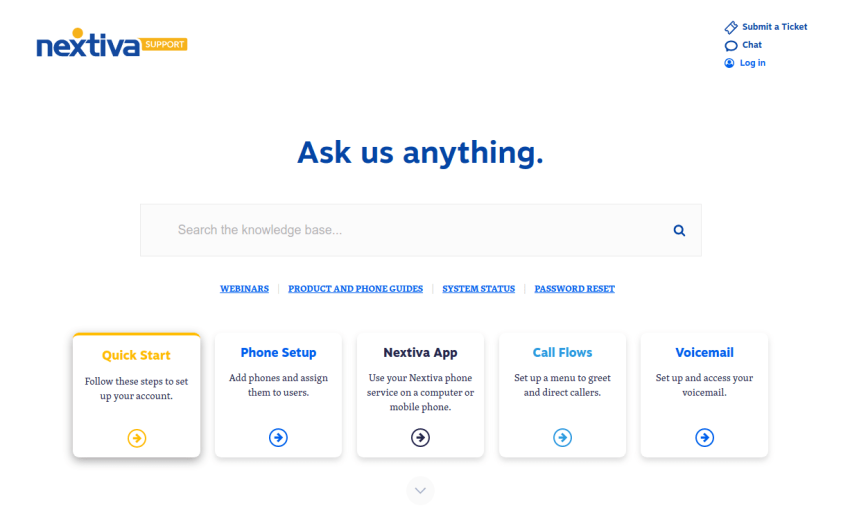
It’s also important to engage with your community. Allowing customers to share solutions and feedback not only provides more resources for customers but also makes them feel invested as they help their fellow customers.
Follow-ups
Following up with customers shortly after resolving their issues might seem like overkill, but it actually strengthens your relationship and offers valuable benefits for your brand. It demonstrates that you’re committed to building a genuine connection beyond simply closing support tickets.
Additionally, timely check-ins provide an opportunity to gather insightful feedback, address any lingering concerns that may have been overlooked, and identify systemic problems before they escalate.
Use A/B Testing to Optimize Interaction Strategies
A/B testing offers a safe and effective way to experiment with new interaction strategies. Rather than completely overhauling your communication style without knowing how customers will respond, you can compare different messaging versions side by side.
By testing variations in technical jargon, the tone of your chatbot’s replies, or subject lines, you’ll ultimately discover what truly resonates with your audience.
Personalize Messaging
Every customer wants to feel seen and heard. While canned scripts help agents handle higher volumes, customers can easily detect when responses lack authenticity. True empathy can’t be scripted.
That said, crafting entirely personalized interactions for every customer isn’t always practical. The smarter approach is to strike a balance.
Prioritize personalized communication without sacrificing speed by using templates and frameworks to guide your agents’ responses.
Top Tools to Track Customer Interactions Across Every Channel
In today’s expansive digital landscape, where customers expect to connect across multiple channels, it’s essential to monitor their activity wherever they engage with you. Whether through email, phone, or voice chat, staying fully informed about their experience enables you to respond effectively and boost customer satisfaction.
What to Look for in Interaction Management Tools
Every worthwhile customer interaction tracking tool should have these essentials:
Unified Customer History
Using multiple tools to track customer history is a messy setup. You’ll end up with fractured data and lose the cohesive value of a consolidated, single source of truth. Unifying your customer history with a single platform delivers a holistic view of customer activity. This enables agents and sales reps to better serve customers.
Real-time Sync Across Channels
It’s not enough to have a unified data center. Despite merging data from multiple channels into one pod, temporary inconsistencies between different data sources jeopardize data integrity (even if it’s for a short while). Synchronizing data in real-time helps you avoid such confusing events.
AI tagging and analytics
Imagine manually sorting through thousands of customer interactions to label and organize them, all in the hope of spotting meaningful patterns. Instead, it’s much smarter to leverage AI to handle these time-consuming tasks. An automated tagging system saves you time, uncovers valuable insights, and turns conversations into actionable data.
CRM integrations
A customer interaction tracking tool can quickly become a major inconvenience if it doesn’t automatically log interactions into your existing CRM system. This forces agents to spend time on manual, error-prone data entry. Choosing a tool with seamless CRM integration helps you stay organized, break down silos, and boost overall efficiency.
Collaboration between sales, support, and marketing
Since customer interactions span multiple teams, it’s crucial to choose a platform that fosters seamless collaboration for all parties involved.
Top Multichannel Interaction Management Tools
Salesforce CRM: Gold standard with customizable dashboards
Salesforce is a powerful cloud-based platform that enables users to manage sales, marketing, and customer service from one interface. Its strengths include a highly customizable dashboard, a deep feature set, and AI integrations. Although Salesforce is the go-to platform for enterprise-level organizations, it also offers scalable plans that may appeal to smaller businesses.
Freshdesk: Unified helpdesk with omnichannel support
Freshdesk is a customer support platform that offers an organized ticketing system for handling customer queries. It’s praised for covering multiple touchpoints such as email, phone, and social media. Freshdesk is a tool small-to-medium-sized businesses can rely on to optimize customer support by resolving issues faster and driving satisfaction.
Zoho CRM / Bigin: SMB-focused tool with channel tracking
Zoho CRM is a suitable alternative to Salesforce for smaller businesses without enterprise-grade budgets. It provides a wide array of features for tracking customers’ journeys, automating follow-up strategies, and embracing artificial intelligence to assist customer interactions.
EngageBay: All-in-one sales, marketing, and service suite
EngageBay offers an all-in-one customer experience solution at an accessible price for startups and growing businesses. This platform stands out for its unified approach to customer experience, giving marketing, sales, and support teams a single, user-friendly platform to operate from.
ProProfs Help Desk: Simplifies support
ProProfs Help Desk is another pocket-friendly customer support platform popular for its deep set of automation features, like ticket routing and chatbots. While this tool offers good value for its worth, it lacks the advanced features found in enterprise-grade competitors, making it more suitable for growing businesses.
Unify Before Scale…
To get the most value from your tracking tools, a unified customer data center is essential. While a fragmented system may provide some surface-level insight into day-to-day interactions, it often leaves you struggling to piece everything together and extract truly actionable insights.
In contrast, a unified platform automatically logs customer interactions into a centralized hub—connecting data from your CRM and other relevant sources. This all-in-one system not only improves efficiency but also enables seamless collaboration across teams by eliminating data silos and friction.
Why Nextiva Is the Smarter Unified Alternative
Nextiva offers all the tools you need to track user activity, analyze insights, and deliver a seamless customer experience—all within a single platform. In fact, 81% of CX leaders agree that centralizing interaction data leads to better outcomes. That’s why Nextiva prioritizes data consolidation, bringing together all customer communications—voice, email, chat, and SMS—into one unified record.
This comprehensive platform empowers teams to monitor a customer’s journey across multiple touchpoints, visualizing it effortlessly on a single dashboard. With over 1 million users and 100,000 businesses relying on Nextiva’s unified system, silos are broken down, outcomes are improved, and customer satisfaction is elevated.
With Nextiva, you can take a step back while AI automations handle call routing, monitor interactions, and tag conversations to uncover meaningful patterns in a consistent database. Advanced AI analytics tools like SmartTopics®, Experience Score®, and sentiment analysis keep you informed in real-time, delivering actionable insights that help you stay connected to your customers’ needs.
Nextiva’s Customer Interaction Management Solution
Managing customers is not an afterthought.
Customer loyalty is not guaranteed, especially as more customers become more critical of and less loyal to individual brands. If you don’t take CX seriously, your customers will move on to another brand that doesn’t cut corners or take them for granted.
However, with effective customer retention strategies, you can furnish a strong CX that will keep your customers satisfied and loyal. This requires constant review and maintenance, investing in technology such as omnichannel communications and self-service solutions, and creating a culture of accountability and growth — but the result is more than worth the effort.
If you’re looking for a solution with all the tools and tech you need to create significant customer interactions, then you’ll want Nextiva. Nextiva is a unified CXM platform that’s easy to use and scales for organizations of all sizes.
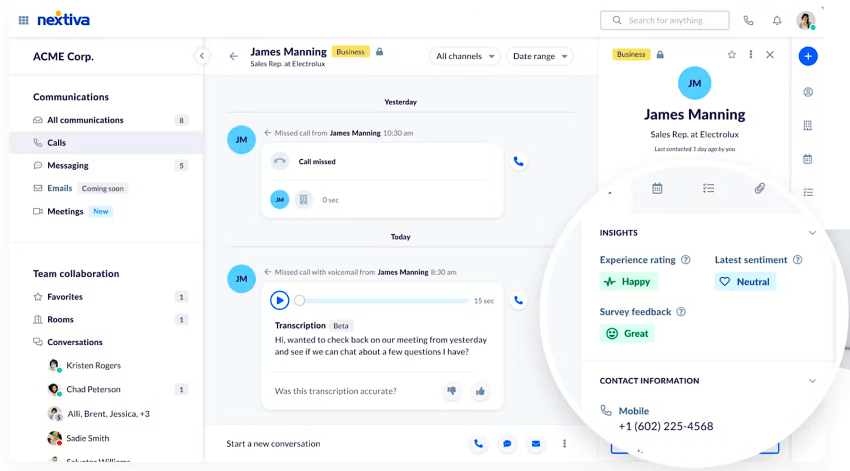
Some of the unique features include:
- A holistic view of your customer data and interactions
- Real-time interaction management
- AI-powered analytics and metrics with actionable insights
- Omnichannel functionality in one platform

All this has been shown to enhance the customer experience, improve customer retention, build a strong reputation, and increase revenue.
Nextiva empowers agents to proactively address customer concerns. It helps managers see gaps in their CX and provides a full overview of your customer interactions, helping you ensure that your customers end their calls satisfied.
Create an amazing customer experience.
Say goodbye to siloed conversations and hello to a unified experience. Engage on every channel with Nextiva’s platform for the best customer experience.

















 Customer Experience
Customer Experience 









